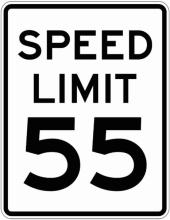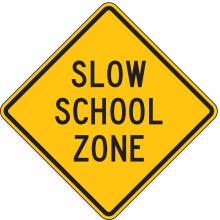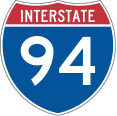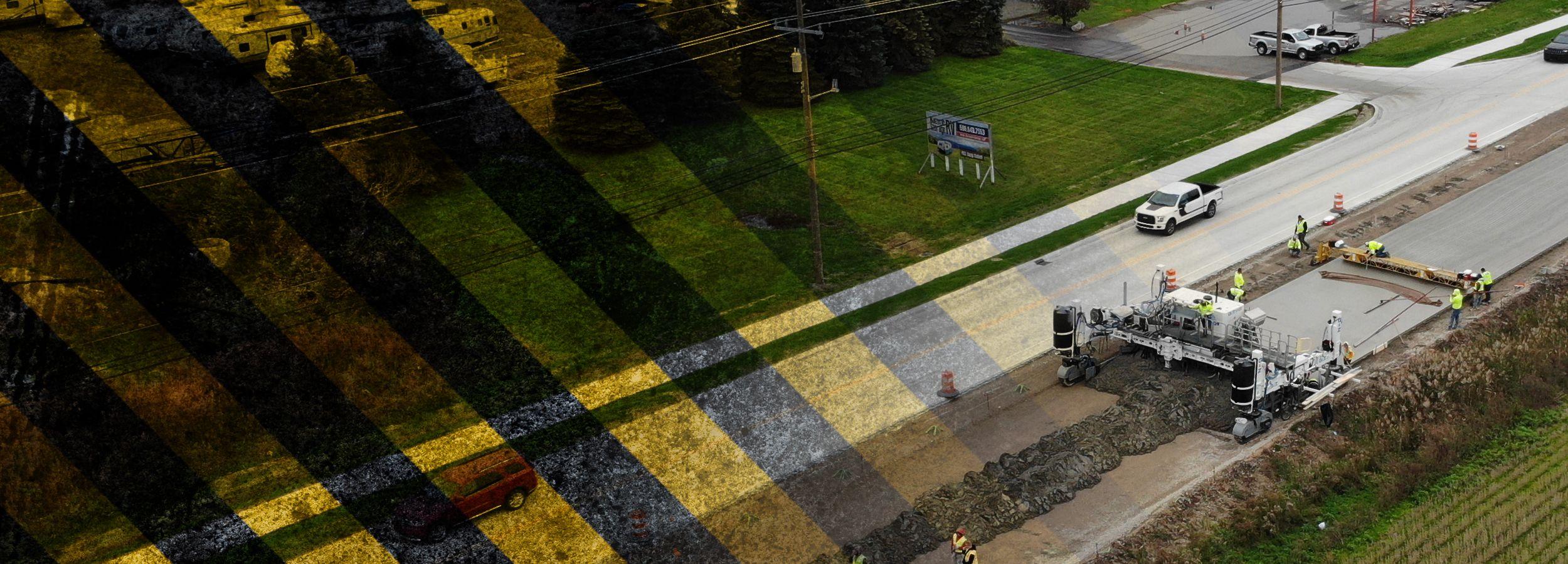
Speed limits provide motorists, law enforcement, and traffic courts with information on reasonable and safe speeds that facilitate the safe, orderly flow of traffic under normal conditions.
Under the Michigan Vehicle Code, the Basic Speed Law states "a person driving a vehicle on a highway shall drive at a careful and prudent speed not greater than nor less than is reasonable and proper." The maximum speed limit on all highways is 55 miles per hour (mph). On roads where there is no posted speed limit, or on gravel or unpaved roads, the speed limit is known as the "prima facie" speed limit. Prima facie speed limits are subject to driver judgment of driving conditions. The prima facie speed limit in residential and business districts is 25 mph. These speeds may not always be posted, but motorists are required to know them.
Speed limits are established by state law and traffic engineering studies, which analyze road conditions, crash history, and prevailing speeds along the road.
When vehicles are traveling on the same road at uniform speeds, there are less chances for conflicts and crashes. Posting speed limits lower or higher than what the majority of drivers are traveling, produces two distinct groups of drivers, those attempting to observe the limit and those driving at what they feel is reasonable and prudent. These differences in speeds may result in increased crashes due to tailgating, improper passing, reckless driving and weaving from lane to lane.
Inappropriate speed limits also foster disregard for other speed limits, traffic signs and signals, and contribute to driver frustration. Finally, when traffic is traveling at different speeds, the number of gaps in traffic to allow safe crossing is reduced and pedestrians and other drivers have a more difficult time in judging the speed of approaching vehicles.
National Research and experience in Macomb County confirm that appropriate speed limits do not increase traffic crashes. Contrary to the notion that “increasing the speed limit will increase speed of traffic by another 5 to 10 miles per hour,” local experience shows that there is no substantial increase in speeds after a higher speed limit is posted appropriately.
Speed limits between 25 and 55 mph are established by a joint administrative action between the Department of Roads and the Michigan State Police (MSP) by a traffic engineering study.
A traffic engineering study analyzes road conditions, crash history, and prevailing speeds along the road. The speed limit is set at or below the speed in which 85 percent of the drivers drive, otherwise known as the 85th percentile speed. Studies have shown that posting the speed limit at the 85th percentile speed results in more uniform traffic flow and fewer accidents. Drivers tend to be less impatient, pass less often, and tailgate less, helping reduce the occurrence of traffic crashes.
Due to the changing conditions of unpaved roads, MCDR does not post speed limits on gravel roads. Roads that do not have posted speed limits fall under Michigan’s Basic Speed Law, which requires motorists to drive in a safe and reasonable manner with a maximum speed of 55 mph.

School speed zones are generally established for the protection of students walking to and from school. According to state law, the speed limit in a school zone is 25 mph. However, the speed can be set at no more than 15 mph below the regularly posted speed limit, but not less than 25 mph, if there is a sidewalk on at least one side of the road.
The need for school zones is determined by completing a joint study between MCDR, MSP, and the appropriate school district. MCDR considers requests for school speed zone studies only from the school district’s Superintendent.
The school speed limit can only be enforced:
- Between 30 minutes and one (1) hour before the first regularly scheduled school session until school starts
- During the lunch period if students are allowed to leave the school
- Between 30 minutes and one (1) hour after school is dismissed
Permanent signs designating school zones and speed limits are posted.

Freeway speed limits are set by state law and can only be changed by the Michigan Legislature. State law dictates that the maximum speed on Michigan freeways is 70 mph. In many places, though, the maximum speed limit is 65 mph. Typically, in congested urban areas, the maximum speed limit is 55 mph.
The Department of Roads often receives requests to reduce speed limits. Although the public is encouraged to notify public officials with what they perceive to be speeding concerns, speed limits are not set based on casual observations or uninformed opinions. Public agencies have a responsibility to establish speed limits based on state law and traffic engineering studies.
In order to change a speed limit, a speed limit study would need to be performed by MCDR, MSP, and the local authority (city, village, or township) as required by state law. The speed limit study must be requested by the local community with official correspondence.
If you have further questions related to speed limits in Macomb County, please contact the Department of Roads at drtraffic@rcmcweb.org or 586-463-8671.
Please note: Reducing speed limits does not necessarily improve safety or reduce speeds. The findings of speed limit studies are binding, regardless of outcome.
Below is additional information related to speed limits.







